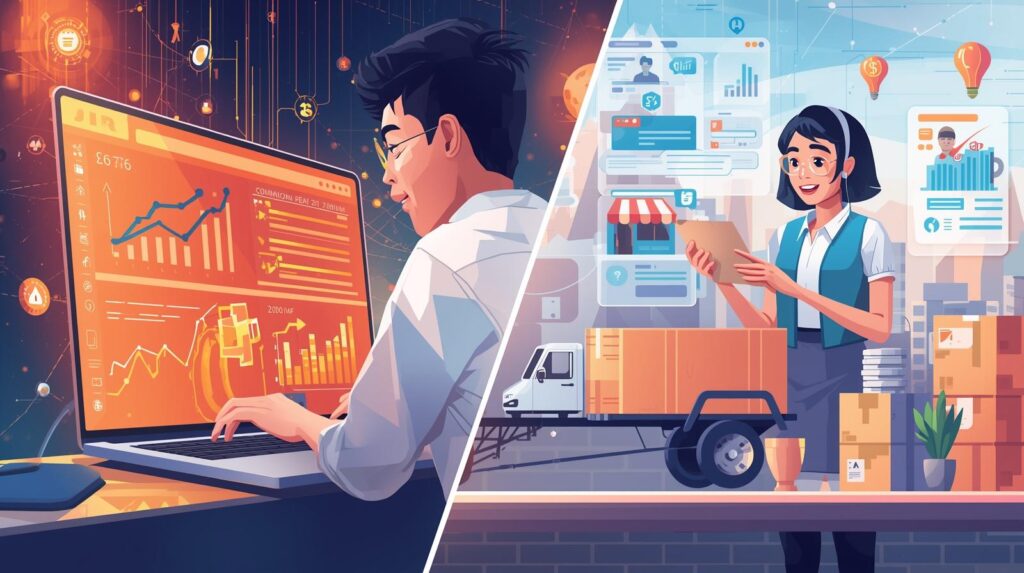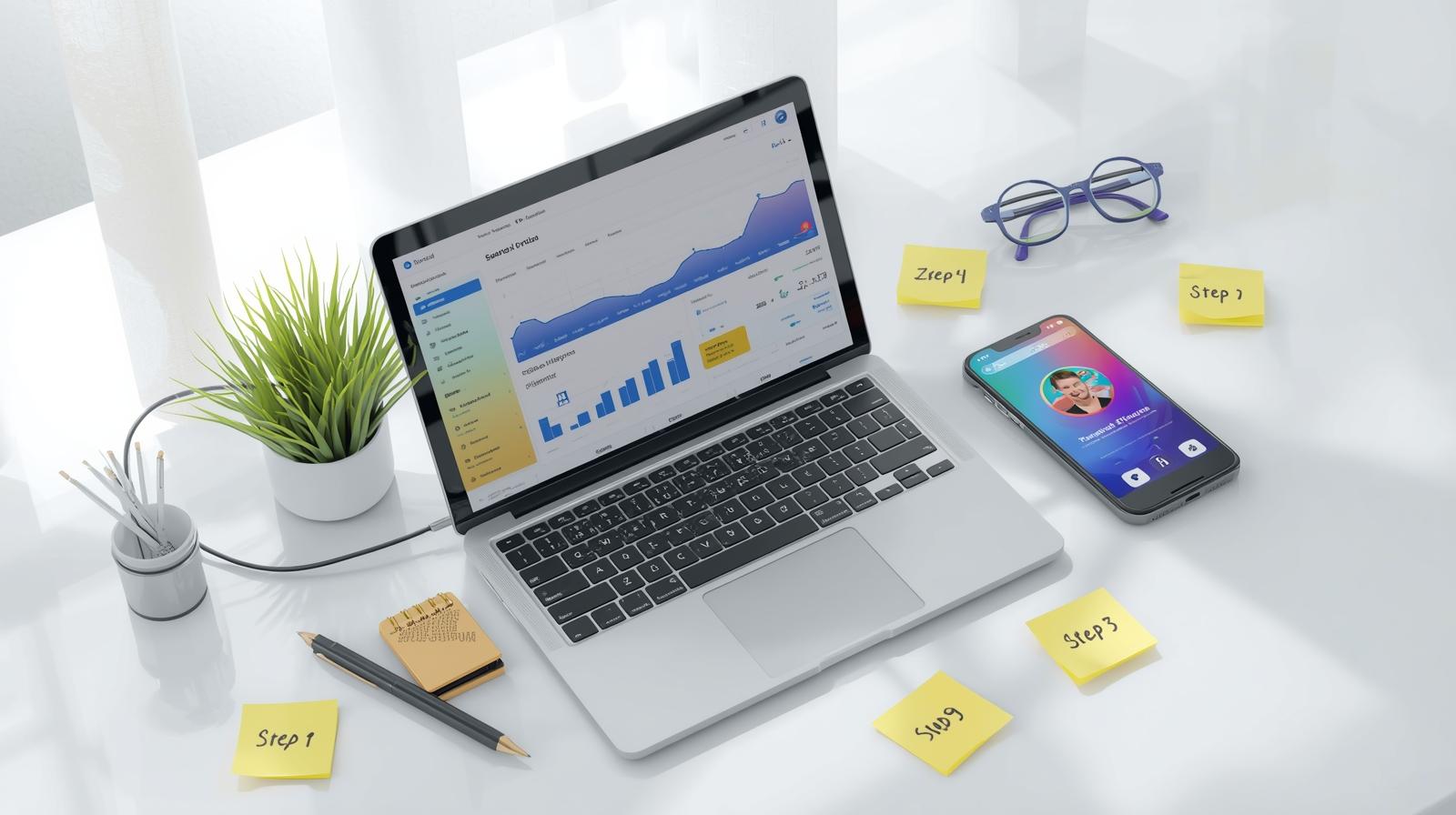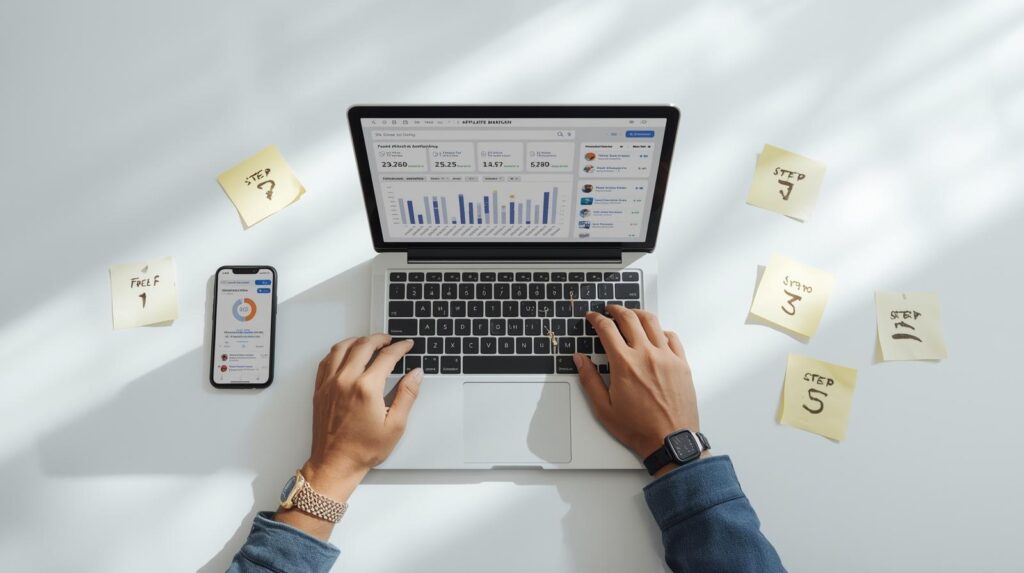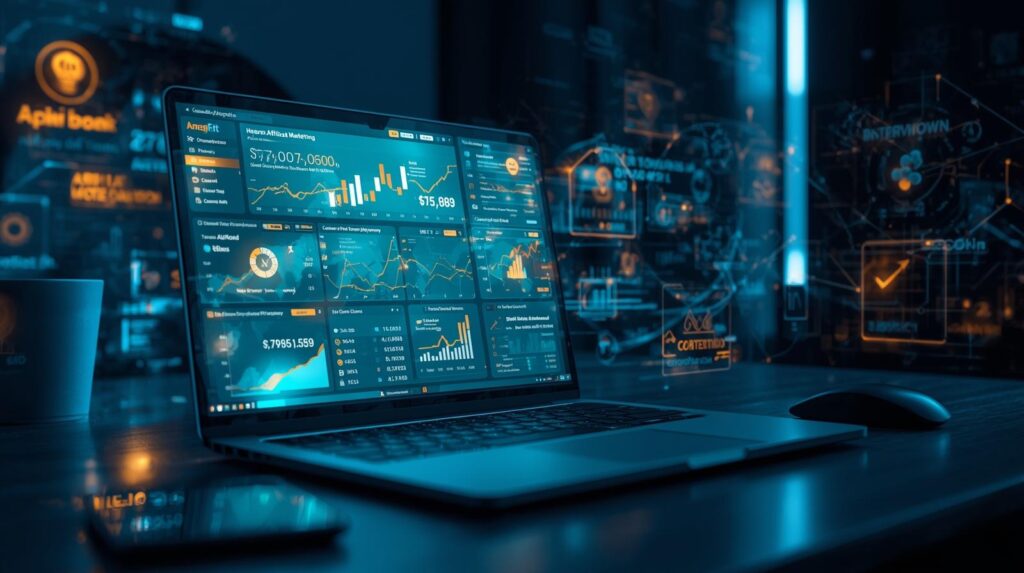Introduction
If you’ve been scrolling through YouTube or blogs lately, you’ve probably noticed everyone talking about affiliate marketing like it’s the holy grail of online income. And honestly? They’re not completely wrong. The beauty of affiliate marketing is that you don’t need to create your own product, ship anything, or deal with messy refunds. You just connect people with products they already want, and you earn a commission when they buy.
But here’s the catch: the internet is crowded. In fact, it’s noisier in 2025 than ever before. So what happens is, only the people who know a few smart hacks actually make consistent money. And that’s exactly what I want to break down for you today. These aren’t random tips; they’re strategies that are working right now, this year.
Let’s dive in.
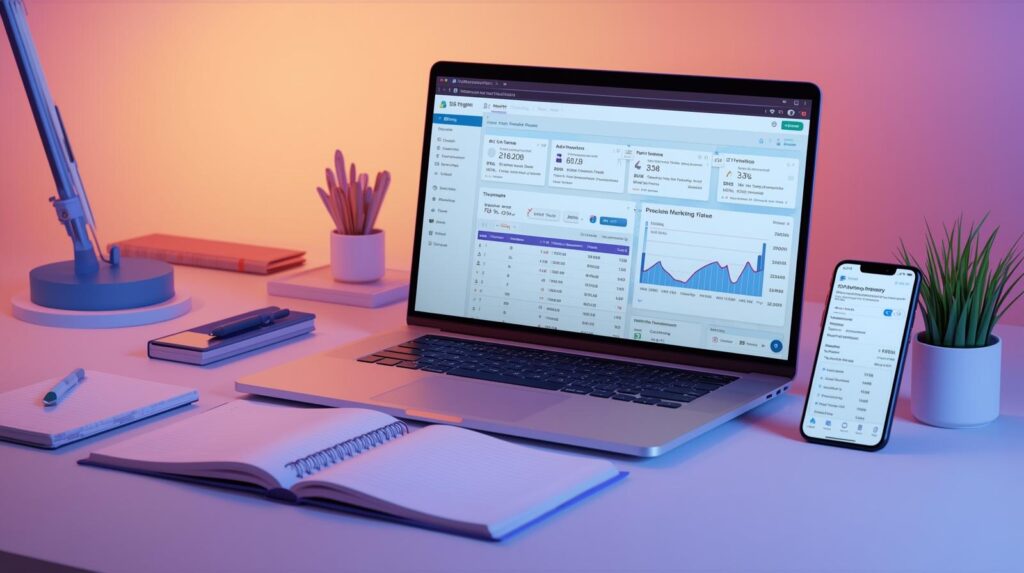
1. Start with the Right Niche (Even if It’s Not Fancy)
The problem is most beginners chase “hot” niches they see on TikTok or Instagram—like crypto or trendy gadgets—without realizing how competitive those spaces are.
But the good news is, you don’t need to jump on hype trends to make real money. Instead, look for evergreen niches: things people always need. Examples? Personal finance, health supplements, online learning, and even government-related updates like the 8171 web portal where people constantly check CNIC, payment tracking, and online confirmation methods.
The trick is simple: pick a niche with consistent demand, not just temporary buzz. That way, you’re building a long-term income source, not a one-season hustle.
2. Content First, Links Second
Let’s be real. Nobody wakes up thinking, “I want to click on an affiliate link today.” What people actually want are solutions. If your content gives them that solution, then clicking your affiliate link becomes natural.
So instead of spamming product links everywhere, focus on:
- How-to guides (like “latest method to check CNIC online”).
- Product comparisons that save people time.
- Case studies where you show how a tool worked for you.
When your content feels genuine, trust builds. And when trust builds, income follows.
3. Don’t Just Do SEO, Think AEO + GEO
You’ve probably heard of SEO (search engine optimization), but in 2025, that’s not enough. AI-driven engines like ChatGPT Search, Perplexity, and even Bing’s AI chat are pulling in content to answer users directly. That’s where AEO (Answer Engine Optimization) comes in.
Here’s the hack:
- Use headings that are written as questions.
- Write short, direct answers in plain English.
- Add structured data like tables that AI bots can “quote” easily.
Here’s a simple example:
| Payment Status | What It Means |
|---|---|
| Pending | Your click was recorded, but the purchase is still being verified. |
| Confirmed | The sale is validated, and your commission is approved. |
| Paid | The money has been released and sent to your account. |
| Rejected | The order didn’t qualify (refund, fraud, or invalid CNIC check). |
Tables like this are scannable for humans, but also gold for search engines and AI platforms. That’s GEO (Generate Engine Optimization) in action—making your content easy for AI to generate in summaries.
4. Build an Email List Before It’s Too Late
Here’s something most people don’t realize until it’s too late: relying only on social media or search engines is risky. Algorithms change overnight. But your email list? That stays yours forever.
So what happens is, every smart affiliate marketer starts list-building on day one. Offer something simple—a checklist, a “quick guide,” or even a free PDF like “Latest Methods for Payment Tracking in 2025.” Then send helpful tips regularly, not just promotions.
In fact, many affiliates report that their email list brings in more revenue than their blog or YouTube channel. Why? Because email feels personal. And personal sells.
5. Use Free Traffic Before You Think Ads
Look, paid ads are tempting. You see those screenshots of people spending $100 and making $500 back. But the problem is, unless you already know what’s working, you’ll burn cash faster than you think.
Instead, use free traffic sources first:
- Blog posts optimized for SEO and AEO.
- Short videos on TikTok, Instagram Reels, and YouTube Shorts.
- Free web portals or forums where people already search for info.
Once you’ve tested what converts, then scale with ads. That way, you’re not guessing—you’re investing in proven winners.
6. Track Everything Like a Pro
Affiliate marketing is like playing cricket blindfolded if you don’t track. You might hit the ball, but you won’t know how.
Just like government portals offer payment tracking so users can confirm their status, you need tracking tools for your affiliate links. Most affiliate dashboards already show clicks, conversions, and commissions. But using your own tracker helps you see deeper:
- Which blog posts are driving the most clicks.
- What kind of content actually converts.
- Where your audience is coming from.
The more you track, the more you can tweak. And the more you tweak, the faster your income grows.
7. Focus on Evergreen + Trending Mix
Here’s a little hack almost nobody talks about: don’t go 100% evergreen or 100% trendy. Mix both.
For example:
- Evergreen: “How to check CNIC online through the 8171 web portal” (people will always search this).
- Trending: “Latest method for online payment confirmation in 2025” (fresh keywords attract AI engines and social shares).
This balance keeps your traffic steady and growing.
Final Words
Affiliate marketing in 2025 isn’t about chasing shiny objects—it’s about building trust, creating content that solves problems, and optimizing for both humans and machines. If you apply these hacks—choosing the right niche, creating problem-solving content, optimizing for AEO + GEO, building an email list, using free traffic, and tracking everything—you’ll see real results faster than most beginners.
Remember, this isn’t magic. It’s strategy plus consistency. Start today, apply even two or three of these hacks, and watch your affiliate income grow in the next few months.
FAQs
1. Can I start affiliate marketing with zero money in 2025?
Yes. You can use free blogs, social media, or even forums. No investment required.
2. How long before I make my first commission?
It depends on your effort, but most people see results within 3–6 months if consistent.
3. Do I need a website to start?
Not strictly. You can use free platforms, but having your own site builds long-term credibility.
4. How do I track affiliate payments?
Use the dashboard from your affiliate program. It’s similar to payment tracking systems on government portals where you check pending, confirmed, or paid status.
5. Which niches are best in 2025?
Finance, AI tools, health, education, and government-related updates like CNIC checks and web portal confirmations.


